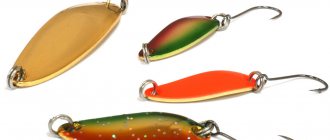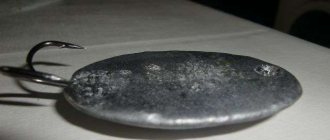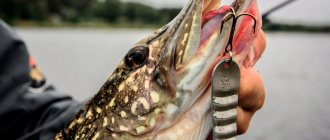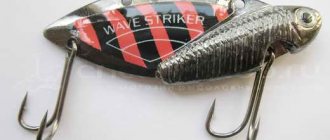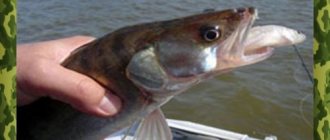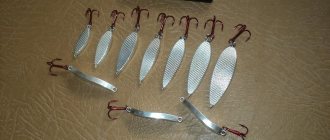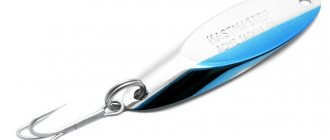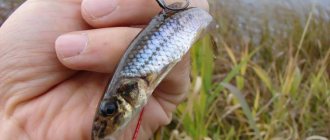Kunja fish is a little-known member of the salmon family. Not all ordinary people know this fish, and it is known only to fishermen. Kunja belongs to the “char” subspecies. Fish of this subspecies have no scales. This fish is very attractive in appearance and cannot be confused with any salmon. Its color is bright amber, with orange fins. It is decorated with white spots on the sides. Because of its color, the fish received the second name “speckled white salmon.” Kunja is one of the largest representatives of salmon.
She is a true and very skilled predator. The mouth of this fish is large and lopsided, with many small, but very sharp and strong teeth. There are two types of kunja: walk-through and residential. The type of kunja directly affects its lifestyle, size and habits.
This predator cannot be bred artificially. The fact is, this type of char requires both fresh and salt water. On farms it is almost impossible to fulfill both of these conditions at the same time.
This bright representative of the Far Eastern fish is highly valued among fishermen. The point is not at all in the meat of this fish, which is undoubtedly tasty. The process of capturing her is extremely interesting and quite complex.
Kunja size
Kunja fish is a large representative of its family. Usually its weight reaches 3-5 kilograms and its length is up to 1 meter. Fishermen have encountered specimens weighing up to 10 kilograms and a length of more than a meter. Massive fish are extremely rare. Not long ago, a case of catching a very large brown trout was recorded. In the Ola River, not far from Magadan, a kunja was caught, the size of which was 1.5 meters.
Migratory marine fish are much larger than their residential relatives, and their life expectancy is also much higher.
This beautiful fish reaches its weight and length at about 5-6 years. It is at this time that she is caught. The life expectancy of this harsh anadromous predator is 15-17 years, and the living period is 10-12 years.
Fish “Kunja” photo and description
Latin name:
Salvelinus leucomaenis
Family:
Salmonidae
Genus:
Loaches
Type:
anadromous
Lifestyle:
pelagic
Diet type:
carnivorous
Habitat:
Pacific Ocean basin
Appearance:
This is a loach with a massive head and a low, wavy body. Kunja differs well from all other types of loaches, first of all, in its unique coloring - large white spots are scattered on the back and sides of the body. The English name for kunja is white-spotted charr, which can be translated as “white-speckled char.”
The mouth of the kunja is large, predatory, the upper jaw is wide, extending beyond the vertical of the posterior edge of the eye. The outgrowth at the end of the lower jaw in males is massive and rounded, the notch on the upper jaw is wide and shallow. The dorsal and anal fins are located closer to the tail than to the head. The general background of the body is silver-gray. In breeding plumage, the mouth, head and back are black, the sides of the body are gray-brown with pink spots, and the belly is dark gray. The fins are black, the outer rays of the paired and anal fins are milky white.
The anadromous kunja can reach a length of 120 cm, a weight of about 15 kg and an age limit of 17 years. The residential form of the kunja is usually smaller. For example, kunja from Lake Chukcha, in the Taui River basin, reaches a length of 53 cm, a weight of 1.6 kg and an age of 11 years.
Habitat and behavioral characteristics:
The range of the kunji covers the Asian part of the Pacific Ocean from the Penzhina River to the Japanese islands of Hokkaido and Honshu. The species is widespread in the southwestern part of the Bering Sea and the Pacific coast of Kamchatka, south of Olyutorsky Bay to Cape Lopatka, and is found everywhere in the Sea of Okhotsk and the northern part of the Sea of Japan, including on the Commander, Kuril, Shantar Islands and Sakhalin. In Primorye, kunja is found from the mouth of the Amur to the Peter the Great Bay. Like other loaches, brown trout, in addition to being an anadromous form, also forms residential populations.
The most numerous are migratory kunja. In spring or early summer, it leaves the rivers to feed in the coastal parts of the sea and returns at the end of summer to the rivers for feeding and breeding. Residential river and lake-river populations are known in the north of the range, in the basin of the Sea of Okhotsk. In the south of the range there are also lake-lagoon, river and stream populations.
Junji migrate to the sea for the first time at the age of 3-5 years. During its life, the trout makes up to 10-11 annual sea migrations with a total life expectancy of 16-17 years. The kunja that has rolled down does not migrate far into the sea; it lives in the estuarine areas of rivers, shallow and heated bays and lagoons.
Nutrition Features:
Adult kunja in rivers have a predominant diet of fish: gobies, sticklebacks, smelts, minnows, juvenile grayling and salmon. In the coastal areas, fish also occupies first place: smelt, navaga, and, less commonly, herring, gobies, and juvenile salmon. During the spawning migration, the brown trout does not feed. Residential lake-river forms have a similar feeding pattern. In those reservoirs where both brown trout and Dolly Varden live simultaneously, they find themselves competing for food resources, since the diets of these species largely coincide. It is interesting that in the absence of kunja, Dolly Varden hunts as an ambush, waiting for prey in a shelter at the edge of the current. However, where there is kunja, there is not enough food, and hunting from an ambush, from an energy point of view, is no longer justified. Under these conditions, Dolly Varden changes its hunting tactics and switches to actively searching and tracking prey.
Reproduction:
The migratory trout reaches sexual maturity at the age of 5-10 years after 2-7 trips to sea. Residential lake-river kunja matures at 6-8 years. Reproduction occurs from the second half of August to September - October in small tributaries of the middle and lower reaches of rivers on pebble soil. Kunja also builds nests and buries eggs in them. Most individuals spawn annually.
FISH CATALOG
